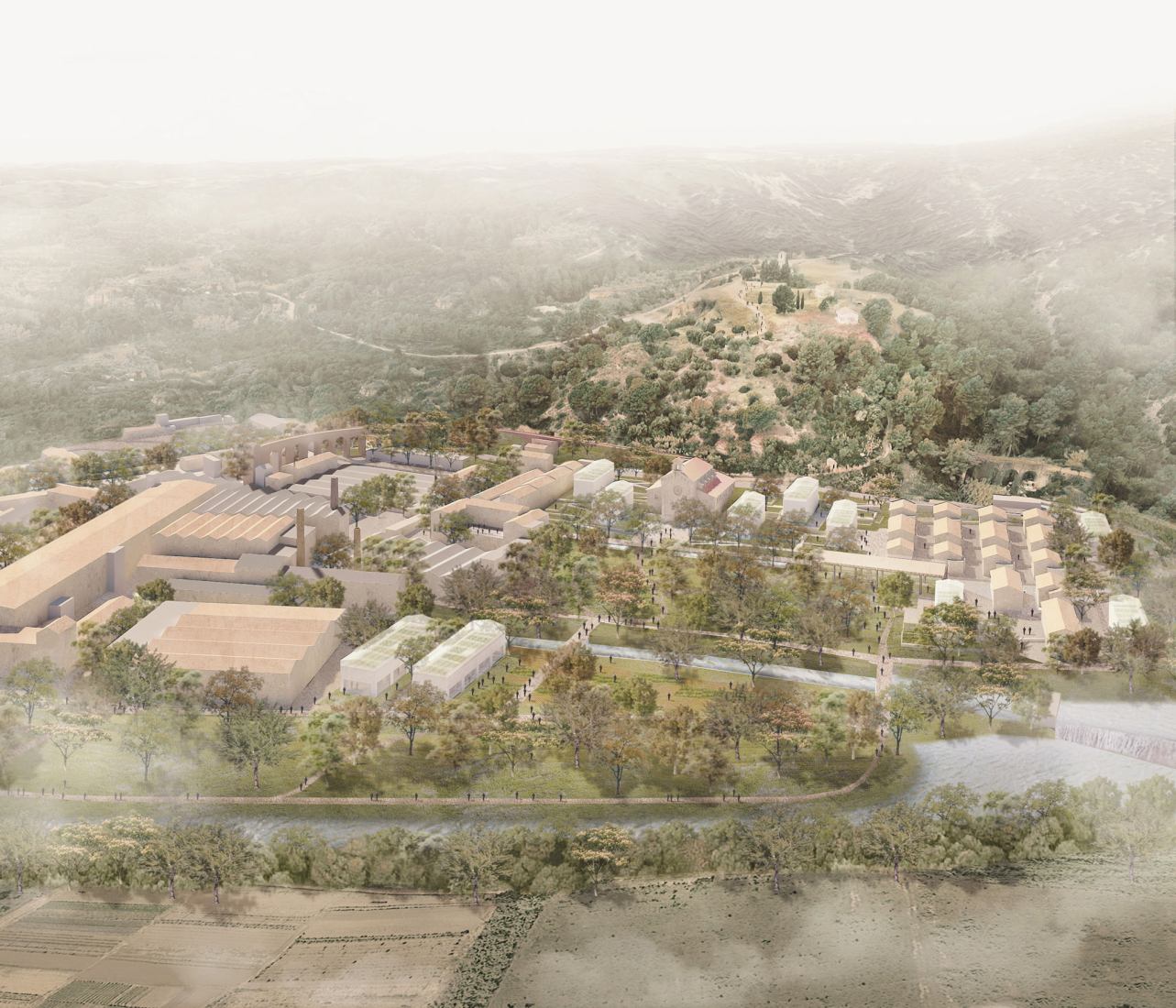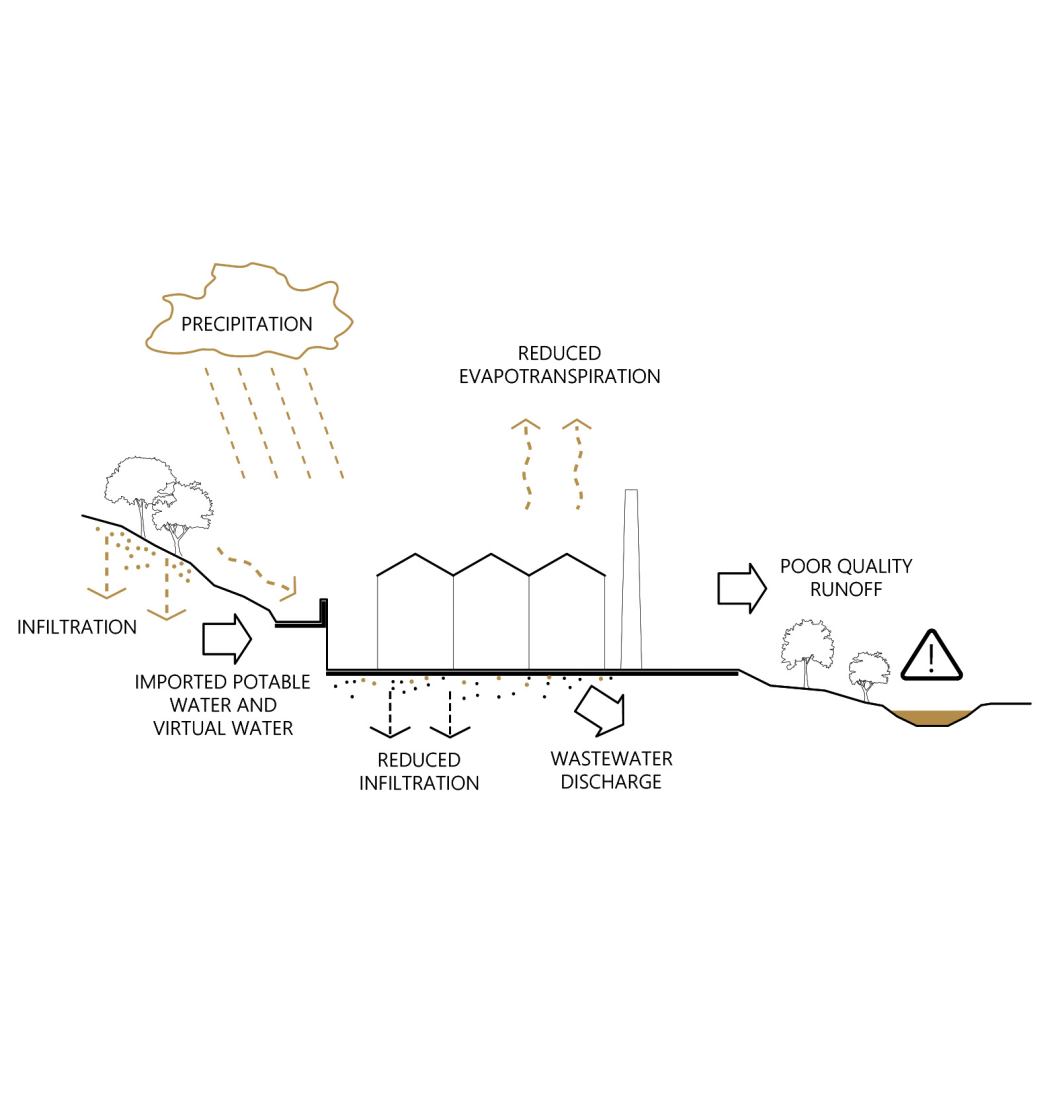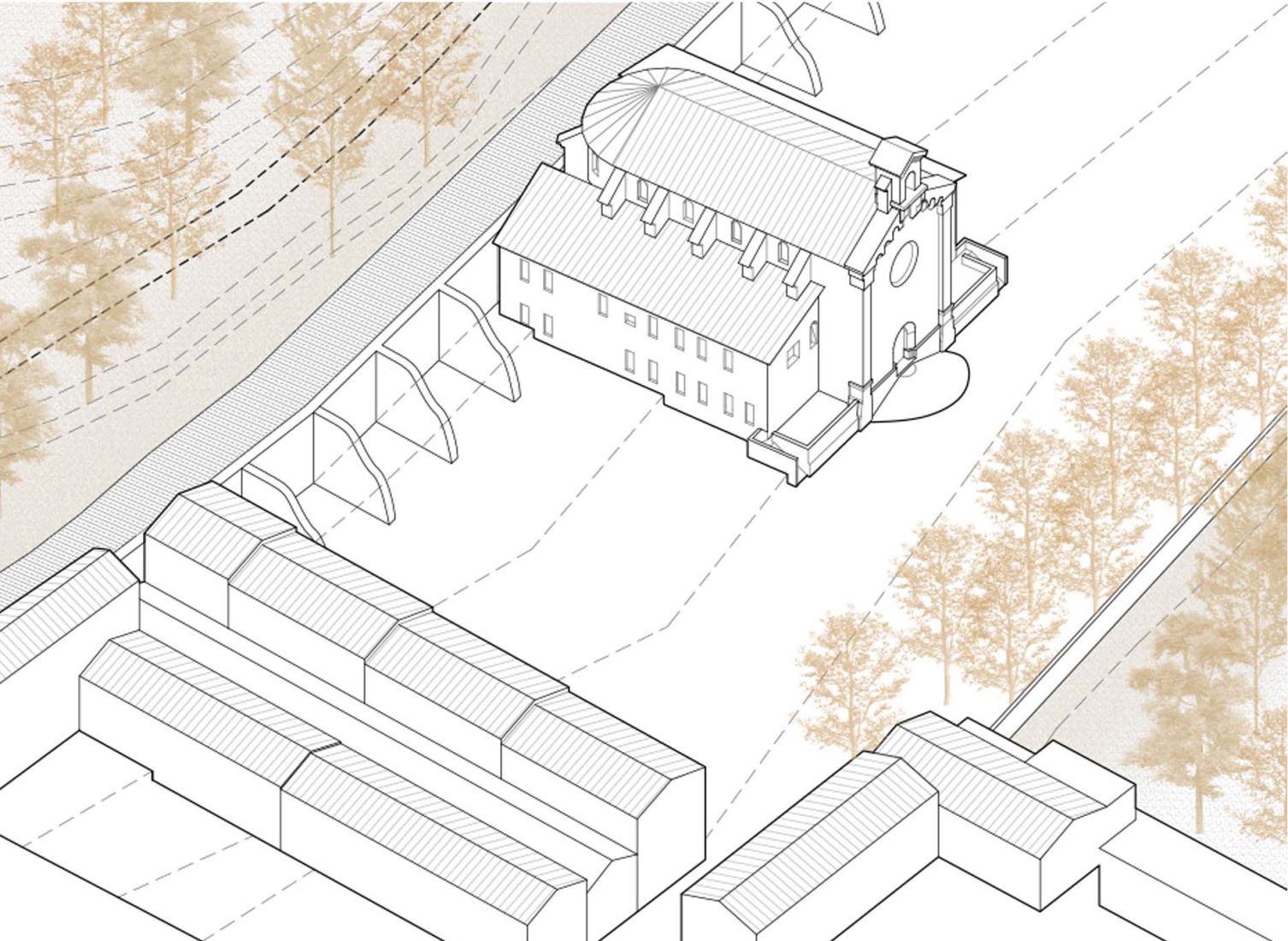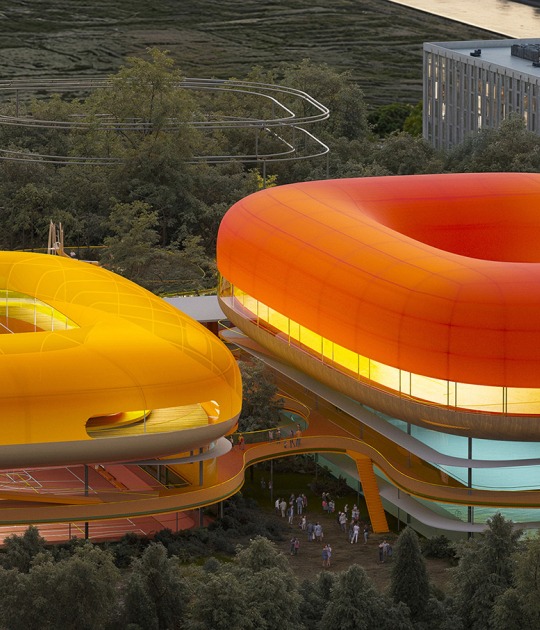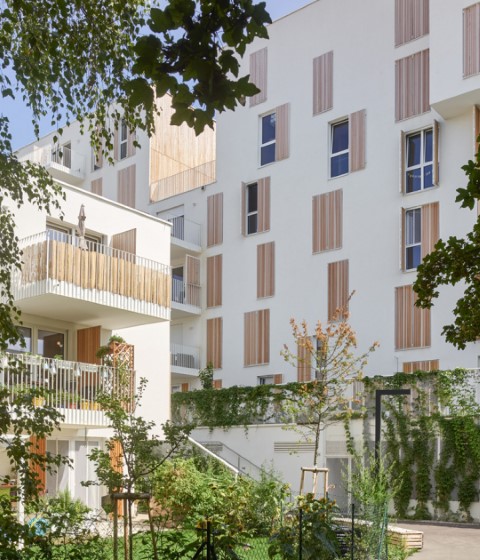The ecological continuity between the mountain and the river is also restored, in this way the water cycle is closed and the colony does not generate a discontinuity. The new model seeks self-sufficiency and also generates a positive impact on its environment.

Rendering. Deconfining the colony by Länk Arquitectes.
Project description by Länk Arquitectes
Colonia Sedó is an isolated industrial area next to the Llobregat River. Its implantation in the territory has ended up generating a "wound" and a natural discontinuity between the mountain and the river. The denaturalization is still evident today and the colony is in a process of degradation and decline that is difficult to reverse.
The proposal wants to repair this wound in order to achieve the maximum ecological continuity between the mountain and the river through the colony.
We believe that heritage preservation must go beyond preserving the physiognomy of the colony, we understand biodiversity as a kind of heritage that must also be restored and preserved. Moreover, we believe that the colony will become a place to live and work in the time to come as soon as nature takes a main role in it.

Deconfining the colony by Länk Arquitectes.
We propose 2 main interventions:
1. The suppression of architectural barriers and obsolete discontinuities achieving greater urban and biological permeability.
2. The strategic re-naturalization of a significant part of the free spaces of the colony.
Likewise, these strategies aim to improve the connectivity of the neighbourhood with its immediate surroundings. We plan to maintain the existing accesses and improve their conditions in order to avoid conditioning the regeneration of the complex to major infrastructural transformations. Also, selective and strategic actions to remove barriers will allow users to enjoy a wide variety of cycling and walking routes connecting nature, the colony's heritage and the heritage of the surrounding area.

Deconfining the colony by Länk Arquitectes.
We propose the selective refurbishment of some roads linked to new pedestrian routes that will offer a more domestic, green and pleasant circulation through certain areas of the industrial fabric. These routes will extend to the northern part of the colony inviting the interaction that has always been deliberately blocked and will offer circular itineraries avoiding the current linear scheme within a single path, between the residential and industrial area.
We identified several buildings that, due to their strategic position, typology and historical significance, could be transformed and reused to accommodate new productive activities, new residential typologies and new neighbourhood facilities.
Residential growth should be carried out progressively, according to the real needs of each moment and through a denser and optimized model in order to offer better habitability conditions.
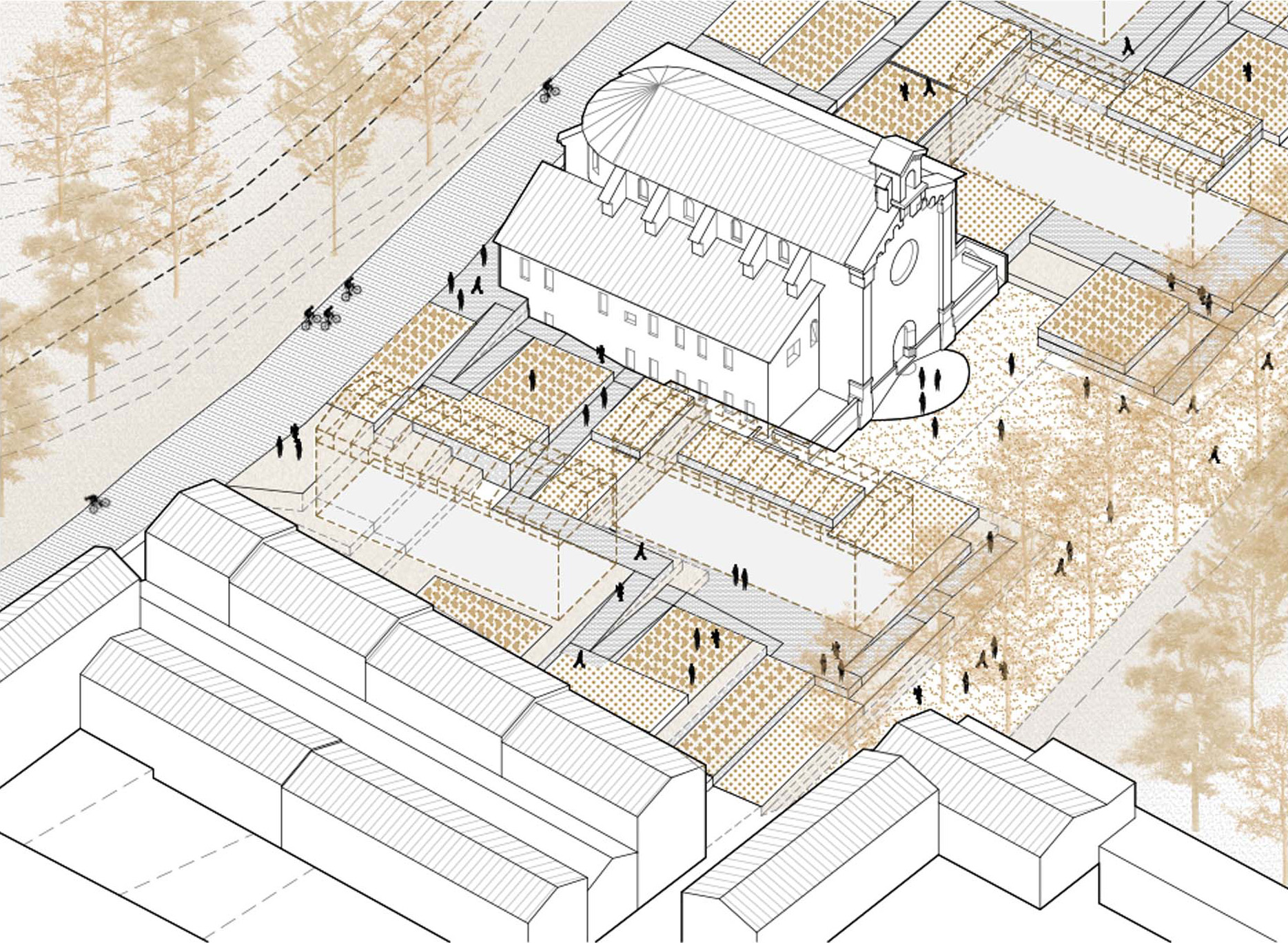
Deconfining the colony by Länk Arquitectes.
Through this principle, half of the new residential floor area expected to increase according to the PMU 02 - POUM could be accommodated in the industrial area. This would significantly minimize the footprint of new buildings in the residential area and at the same time ensure a real mixed-use model in the colony.
In the overall view of the whole, we believe that it is urgent to activate the transition from a linear metabolism (which has characterized the colony until today and has been gradually degrading it) to a circular metabolism, in which the cycles of energy, materials and, as far as possible, the economy are closed.
The new model proposed for the colony seeks self-sufficiency, but also a positive impact on the natural environment, as well as on the nearby towns and communities. Also, water-sensitive urban design strategies seek to achieve a cleaner water cycle that will bring benefits to the Llobregat River and its biodiversity.



